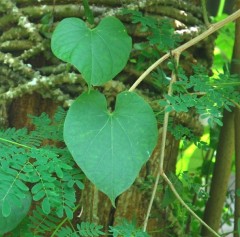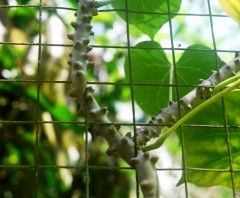May 14, 2012
Poultry Diseases - Natural Cures I
Leucocytozoon sp (chicken malaria) infection is common amongst poultry in a tropical humid country like Malaysia. Todate, worldwide, treatment is by drugs, in particular sulphamonomethoxine sodium, an antibiotic.
Indications are:
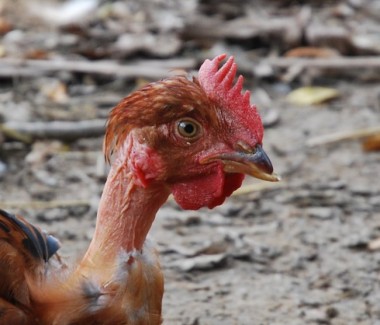
Beginnings of cyanosis - possible spleen damage
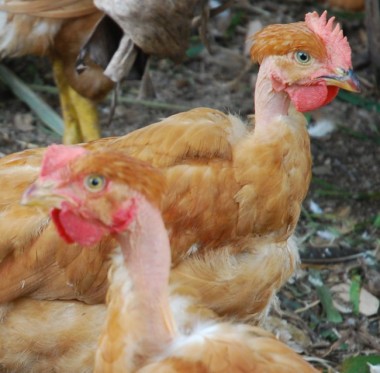
Normal faces
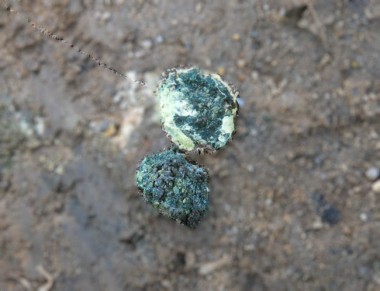
Greenish faeces - rule out Newcastle Disease first.

Inflamed and damaged spleen
Mortality varies. If untreated, mortality can reach 30%.
At our farm, we use herbal medication which is grown within the farm:
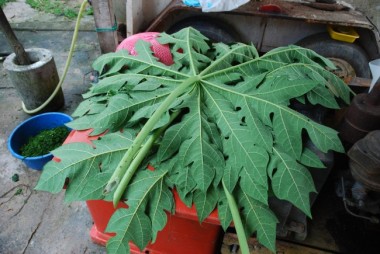
Papaya leaves, hempedu bumi (andrographis paniculata) and patawali (tinospora crispa, tinospora rumphii), pounded to extract a juice
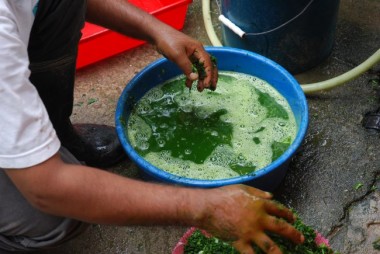
Ratio by volume is papaya leaf 70, hempedu bumi 20, patawali 10
10 liter herbal extract concentrate to be mixed with the drinking water for the day for 1000 chickens.
After 24 hours, the chickens will start to show some mild improvement.
After 48 hours, the faeces will begin to clear and the appetite will be about 70% back.
The juice can be withdrawn when the feed consumption returns to normal.
No drugs is necessary. This treatment is first published in this blog and is now OPEN SOURCE.
Leucocytozoon is spread by blood sucking insects. So, prevention is always possible and encouraged.
Surah 26: 7 – 8, Have they, then, never considered the earth how much of every noble kind (of life) We have caused to grow thereon? In this, behold, there is a message, even though most of them will not believe.
Nov 23, 2010
Useful Plants At The Farm - Patawali
Patawali is a climbing vine and can be planted wherever there's free vertical spaces
This is one of the most useful plants at the farm - patawali or tinospora crispa.
In Vietnam it is called the "vine with a genie's intelligence". In the Philippines, it is called, "to give life".
The leaves can be used as an insect repellant
At our farm, the plant has certainly given life to many an animal with indeterminate debility health problems and fevers. We have been successful with a dosage of about 0.07 grams of the stem per kg body weight for chickens and 10 grams for a goat of about 40 kg.
The stem is used for treating animals
We use this plant also as an insect repellant specifically for mites, aphids and hoppers.
To use, chop finely the leaves and spread around newly planted chillies and other vegetables to prevent insects from spreading viruses such as those that cause chilly leaf curl, at an early stage. Repeat every 5 days.
To make a spray, extract the active ingredients by fermenting the leaves and chopped stem in a solution of your own lactobacillus brew or if you don't have any, then EM is fine. After 14 days, sieve and dilute 1:500 times (can be stronger but watch out for the acidity) and spray on plants to get rid of the target insects.
A DQ discovery; as a mosquito repellent, just pound or blend some stem, filter the juice, and apply on bare skin. It has a pleasant herby aroma. Let dry and you will be mosquito free the whole night (with the possibility of reducing skin mites, and also, skin repair due to its antioxidant content). No necessity for toxic pesticides, or genetically modified mosquitoes. The juice can be kept in the fridge for weeks, making it convenient to use.
We also use this plant as an immune booster for ourselves when we feel under the weather.
(Malaysians interested in planting patawali for use as a natural mosquito repellant can write to me for cuttings for free. You pay for the postage though, or pick it up. Email us at hs_wong33@yahoo.com).
18:19 Posted in Useful Plants | Permalink | Comments (2) | Tags: patawali, tinospora crispa, tinospora rumpii, natural insect repellents, organic insecticides, organic miticides, mites, aphids, thrips, makabuhay, day than thong









